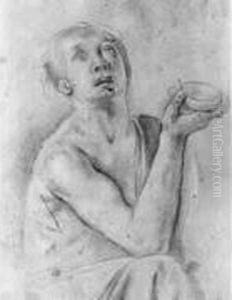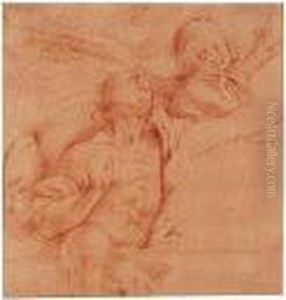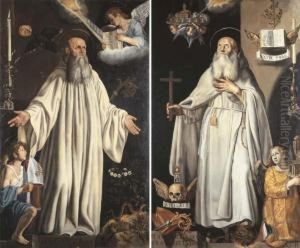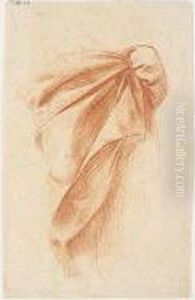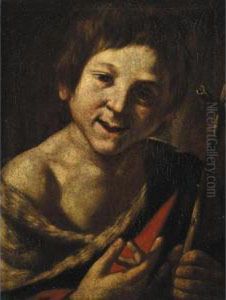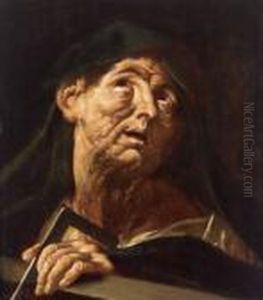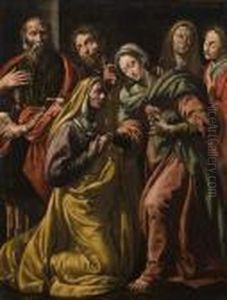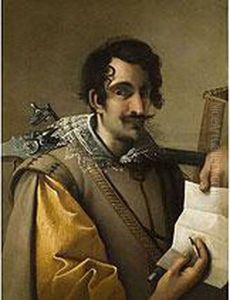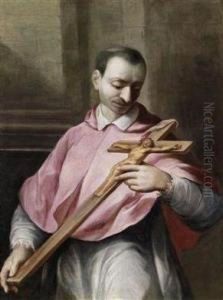Antonio D'Enrico Tanzio Da Varallo Paintings
Antonio D'Enrico, better known as Tanzio da Varallo, was an Italian painter of the late Mannerist or early Baroque period. While his exact birth year is uncertain, he is believed to have been born between 1575 and 1580 in Alagna Valsesia, which is located in the northwest of Italy. Tanzio da Varallo is a name he acquired from the town of Varallo Sesia where he was active for a significant part of his career.
Tanzio’s art was influenced by a combination of local Lombard traditions and the artistic trends he encountered during his travels. The artist’s early training is not well-documented, but it is presumed that he began his career under the guidance of his older brother, Melchiorre D'Enrico, who was also a painter. Tanzio’s work was significantly influenced by the artistic developments in Rome, particularly the works of Caravaggio, whose style is noted for the dramatic use of chiaroscuro and realism.
Around 1600, Tanzio is believed to have traveled to Rome, which was a transformative experience for him. During his stay, he would have been exposed to the works of Caravaggio and the Caravaggisti, as well as to the dynamic artistic atmosphere of the city. He likely also encountered the works of other Baroque artists, absorbing elements that he would later integrate into his own paintings.
Upon his return to Northern Italy, Tanzio brought with him the dramatic light, naturalism, and intense emotional expressions characteristic of Caravaggio’s style. One of his most notable works from this period is the 'Martyrdom of St. Lawrence' in the church of San Gaudenzio at Baceno, which exemplifies his mastery of Caravaggesque light effects and vivid storytelling through art.
Tanzio continued to work extensively in and around Varallo, contributing to the local artistic landscape. He worked on frescoes and altarpieces, many of which were commissioned for chapels and churches in the region. His works are characterized by their vivid detail, emotional intensity, and the dynamic interplay of light and shadow.
Tanzio da Varallo remained relatively unknown outside his local region until the 20th century, when art historians began to reassess the contributions of regional artists to the broader context of Italian Baroque painting. Through this renewed interest, Tanzio’s work has been re-evaluated, and he is now recognized for his role in the dissemination of Caravaggesque stylistic elements in Northern Italy.
Tanzio da Varallo’s death is similarly imprecise in historical records, with estimates placing it in 1632 or 1633. Despite this uncertainty, his artistic legacy is clear. He is remembered as a significant figure who helped to bridge the stylistic developments of the Italian Baroque between the major art centers and the more remote regions of Italy.
